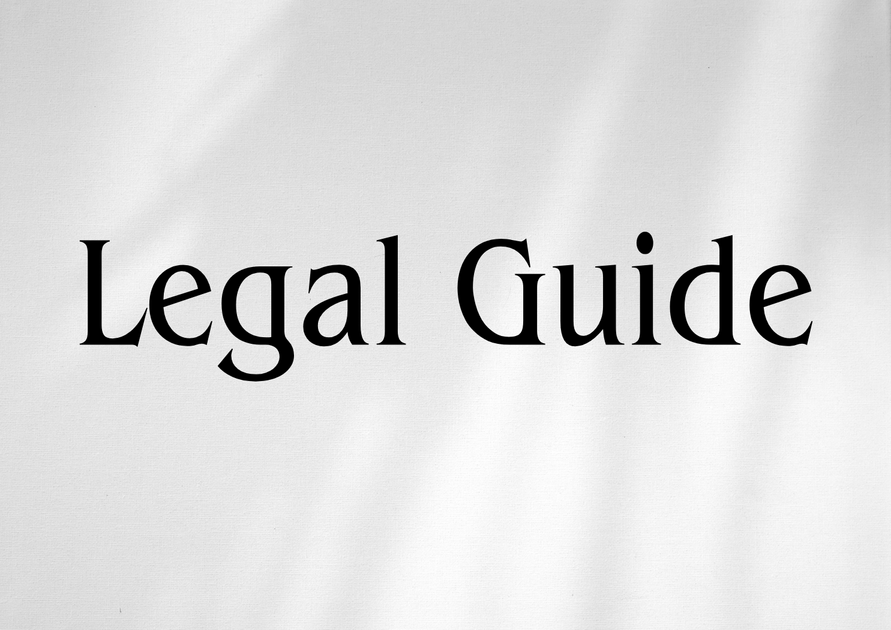Introduction
In a region where cross-border commerce is thriving and financial institutions play a pivotal role in economic growth, it is crucial for UAE-based businesses and legal practitioners to understand the nuances of loan agreements and security instrument enforcement – both locally and in key GCC markets like Qatar. Recent legislative updates and evolving judicial practices have amplified the importance of robust legal frameworks for loan recovery, particularly as organizations expand their operations and risk profiles. As such, this comprehensive article provides an expert analysis of how loan agreements and collateral arrangements are enforced in Qatar, what UAE entities should know, and how recent laws in both jurisdictions impact cross-border business stability. Readers will also find practical guidance, legislative references, compliance strategies, and real-world case analyses tailored to legal professionals, executives, and corporate decision-makers in the UAE.
This legal briefing is especially relevant in light of the ongoing integration of financial standards across the GCC and the introduction of new regulations both in the UAE (including Federal Decree-Law No. 14 of 2020 on Securing Interest with Movable Property) and in Qatar (Law No. 22 of 2021 regulating Security over Movable Assets). The comparative dimension of this article provides a strategic perspective for UAE businesses with financial interests in Qatar.
Table of Contents
- Overview of Qatar’s Legal Framework for Loan Enforcement
- Types of Security Instruments Recognized in Qatar
- Key Legal Provisions Governing Enforcement
- Contractual Enforceability and Procedural Aspects
- Comparison with UAE Law: Recent Updates and Implications
- Case Studies and Practical Scenarios
- Risks of Non-Compliance and Strategic Recommendations
- Conclusion and Forward Guidance
Overview of Qatar’s Legal Framework for Loan Enforcement
Regulatory Foundations
The Qatari legal scheme regulating loan enforcement is primarily set out under:
- Qatar Civil Code (Law No. 22 of 2004): General provisions on contract obligations and remedies.
- Qatar Commercial Code (Law No. 27 of 2006): Rules for commercial transactions and debt instruments.
- Law No. 22 of 2021 (Security over Movable Assets): The most recent and substantial legal update modernizing how security interests are created, perfected, and enforced on movable assets (modeled after international best practices).
- Qatari Civil and Commercial Procedures Law (Law No. 13 of 1990): Lays down the procedural routes for enforcement of court judgements and execution against assets.
These developments indicate a concerted move towards greater transparency, creditor protection, and alignment with international standards.
Enforcement Landscape
Under these frameworks, creditors holding valid loan agreements and compliant security interests are entitled to seek direct enforcement upon default, subject to both documentary formalities and procedural conditions established by Qatari courts.
Key Authorities: Ministry of Justice Qatar, Qatari Central Bank, and Qatar Chamber of Commerce (for commercial disputes) play pivotal roles in registration, oversight, and dispute resolution.
Types of Security Instruments Recognized in Qatar
Movable and Immovable Security
| Security Type | Description | Relevant Law |
|---|---|---|
| Mortgage over Immovable Property | Traditional mortgages, usually registered over real estate assets. | Civil Code; Commercial Code |
| Pledge of Movable Property | Pledge on shares, receivables, inventory, machinery, or vehicles. | Law No. 22 of 2021 |
| Assignment of Receivables | Security transferred over current or future payment rights. | Law No. 22 of 2021; Commercial Code |
| Guarantees (Personal/Corporate) | Third-party surety obligations to back the primary debtor. | Civil and Commercial Code |
| Promissory Notes and Bills of Exchange | Negotiable instruments formalising evidence of debt. | Commercial Code |
Practical Insight: The introduction of an electronic movable assets registry under Law No. 22 of 2021 has streamlined enforcement on non-real estate assets, crucial for lending efficiency and creditor protection.
Key Legal Provisions Governing Enforcement
Law No. 22 of 2021 on Security over Movable Assets
Arguably the most transformative update, this law:
- Establishes a central registry for pledges over movable property (including future assets).
- Enables out-of-court enforcement where non-payment or default occurs, if stipulated in the security agreement.
- Prioritizes registered interests, reducing risks in competing claims scenarios.
- Mirrors international UNCITRAL Model Law principles, promoting legal certainty for all cross-border creditors.
Procedural Flow for Enforcement
- Notification: The creditor must serve notice of default to the debtor as per the contractual triggers.
- Grace Period: Debtor is given an opportunity to cure the breach or fulfill payment obligations.
- Seizure/Sale: Upon continued default, the creditor can seize or sell the secured asset, subject to certain statutory rights of the debtor.
- Distribution of Proceeds: Any surplus after debt repayment is to be remitted to the debtor, establishing equitable treatment.
- Court Intervention: Only necessary if the debtor contests enforcement or the asset type requires judicial execution.
Judicial Enforcement
For assets not falling under Law No. 22 of 2021, or where dispute arises, the Civil and Commercial Procedures Law applies, requiring a final enforceable judgment or order from the Qatari courts. This process involves attachment, execution, and, if necessary, public auction.
Suggestion: A process flow diagram illustrating these procedural steps can be placed here for visual clarity, aiding client understanding.
Contractual Enforceability and Procedural Aspects
Documentary and Registration Formalities
- Loan agreements and security instruments must be in writing and bear clear terms regarding amount, repayment, security, and enforcement triggers.
- Registration is mandatory for effectiveness against third parties (movable property: central registry; real estate: land department).
- Notarization and, in certain cases, translation to Arabic are required for enforceability and admissibility in Qatari courts.
- Registration enhances priority of claims – unregistered interests run the risk of being subordinated.
Out-of-Court vs. Judicial Enforcement
| Enforcement Path | Advantages | Limitations |
|---|---|---|
| Out-of-Court (per Law No. 22/2021) | Quicker, less costly, commercially efficient. | Restricted to covered assets, needs express contractual clause, possible challenges on procedural fairness. |
| Judicial Enforcement | Mandatory for certain assets or when the debtor contests claims; offers formal harm-prevention. | Slower, more expensive, susceptible to delays and appeals. |
Cross-Border Enforcement and UAE-Qatar Collaboration
Qatar is a signatory to GCC-wide judicial cooperation treaties and bilateral agreements with the UAE, allowing, in certain cases, for recognition and enforcement of foreign judgements on loan agreements.
- Reciprocal enforcement is subject to compliance with requisite procedural rules and absence of public policy conflicts.
- Prudent drafting should anticipate possible enforcement actions in both home and host jurisdictions, especially for UAE-based lenders financing Qatari operations.
Comparison with UAE Law: Recent Updates and Implications
Movable Asset Security Laws: UAE vs. Qatar
| Feature | UAE Law (Federal Decree-Law No. 4 of 2020) | Qatar Law (Law No. 22 of 2021) |
|---|---|---|
| Movable Asset Registry | Unified electronic registry, public access | Central electronic registry, public notice |
| Out-of-Court Enforcement | Permitted if contractually agreed, controlled by statutory guidelines | Permitted, provided express agreement and post-default notice |
| Priority of Claims | First-to-register principle | First-to-register principle |
| Types of Secured Assets | Broad (inventory, receivables, accounts, etc.) | Broad, mirroring UAE law |
| Governing Body | Ministry of Justice, Emirates Movable Collateral Registry | Qatar Ministry of Justice |
Practice Pointer: The strong similarity between the two regimes means cross-border lenders can achieve comparable rights in both countries, provided that they observe local formalities and harmonize contractual language.
Compliance Checklist for Lenders
- Ensure all loan and security documents are drafted in compliance with applicable laws.
- Register security interests promptly upon execution.
- Audit existing portfolios for legacy (pre-reform) instruments that may need additional steps to retain priority.
- Incorporate robust default and enforcement clauses, anticipating exclusive and concurrent remedies.
- Consider compliance programs in consultation with local legal advisors in both jurisdictions.
Suggestion: Incorporate a comparison chart or compliance checklist infographic here to enhance user engagement and retention.
Case Studies and Practical Scenarios
Case Example 1: Commercial Loan Default – Cross-Border Recovery
Scenario: A UAE bank extends a QAR-denominated loan to a Qatari company, secured by a pledge over receivables and movable equipment. Upon default, the UAE bank seeks to enforce its rights.
- The bank consults both UAE and Qatari collateral laws, verifies registration on Qatar’s movable assets registry, and serves a default notice as required by Qatari law.
- Debtor does not cure default within the stipulated period.
- The bank invokes out-of-court enforcement, seizes and liquidates the pledged assets, and recovers outstanding amounts swiftly due to compliance with new formalities.
- This outcome demonstrates the time and cost benefits accruing from the legislative reforms.
Case Example 2: Asset Misidentification – Risk of Non-Compliance
Scenario: An investment firm neglects to register a pledge over certain movable assets. Other creditors, later registering claims, are prioritized.
- Upon debtor insolvency, the unregistered security interest is subordinated, resulting in substantial losses to the investment firm.
- This illustrates the criticality of registration and diligent legal compliance.
Key Lessons for UAE-Based Businesses
- Early legal review of loan and security documentation is vital.
- Out-of-court enforcement speeds up recovery, but only where all legal prerequisites are satisfied.
- Active registry monitoring prevents priority disputes.
- Local legal opinions are indispensable for addressing cross-jurisdictional complexities.
Risks of Non-Compliance and Strategic Recommendations
Compliance Risks and Exposure
| Area of Non-Compliance | Potential Risks | Recommended Strategies |
|---|---|---|
| Failure to Register Security | Loss of priority, unenforceability, loss of repayment | Immediate registration upon execution; regular portfolio audits |
| Improper Documentation | Enforcement delays, risk of adverse judgments | Legal review, standard templates vetted by local counsel |
| Inadequate Default/Enforcement Clauses | Uncertainty, possible litigation, asset dissipation | Incorporate precise, scenario-driven enforcement language |
| Poor Localization | Procedural invalidity, limited cross-border enforceability | Obtain authoritative local legal opinions and translations |
Strategic Compliance Recommendations
- Stay Updated: Monitor updates and circulars from Ministry of Justice (Qatar and UAE), Central Banks, and other authorities.
- Legal Capacity-Building: Invest in training for in-house legal and risk teams on both UAE and Qatar regulations.
- Integrated Policy: Develop harmonized loan compliance policies for all GCC markets of operation.
- Proactive Governance: Appoint local agents or counsel in Qatar to manage filings and dispute resolution proactively.
Compliance Visual: Here, a compliance risk matrix or interactive checklist visual can be placed for actionable reference.
Conclusion and Forward Guidance
The landscape for enforcing loan agreements and security rights in Qatar has undergone significant modernization, aligning closely with recent UAE legal reforms. Both jurisdictions now offer robust frameworks that favor timely, transparent, and effective creditor remedies – provided that legal formalities and registration requirements are strictly observed. For UAE-based businesses, these developments open new vistas for cross-border investment and risk management, but also demand a more sophisticated approach to compliance and legal documentation.
Looking forward, continued harmonization of financial laws across the GCC, combined with digital registry advancements, will further streamline enforcement and foster investor confidence. To remain compliant and competitive, organizations should:
- Conduct periodic legal reviews of all outstanding and future loan agreements and security arrangements.
- Implement integrated compliance management programs informed by up-to-date regulatory guidance from the UAE Ministry of Justice, the Qatari Ministry of Justice, and other official bodies.
- Engage with local counsel on both sides of the border for real-time insights into judicial practice and enforcement nuances.
In this rapidly evolving legal environment, proactive compliance and diligent execution of loan documentation are not just best practice – they are indispensable for safeguarding assets, sustaining business growth, and ensuring legal certainty in both the UAE and Qatar. Firms that prioritize such measures will be well-positioned to thrive amid ongoing regional legal convergence.




